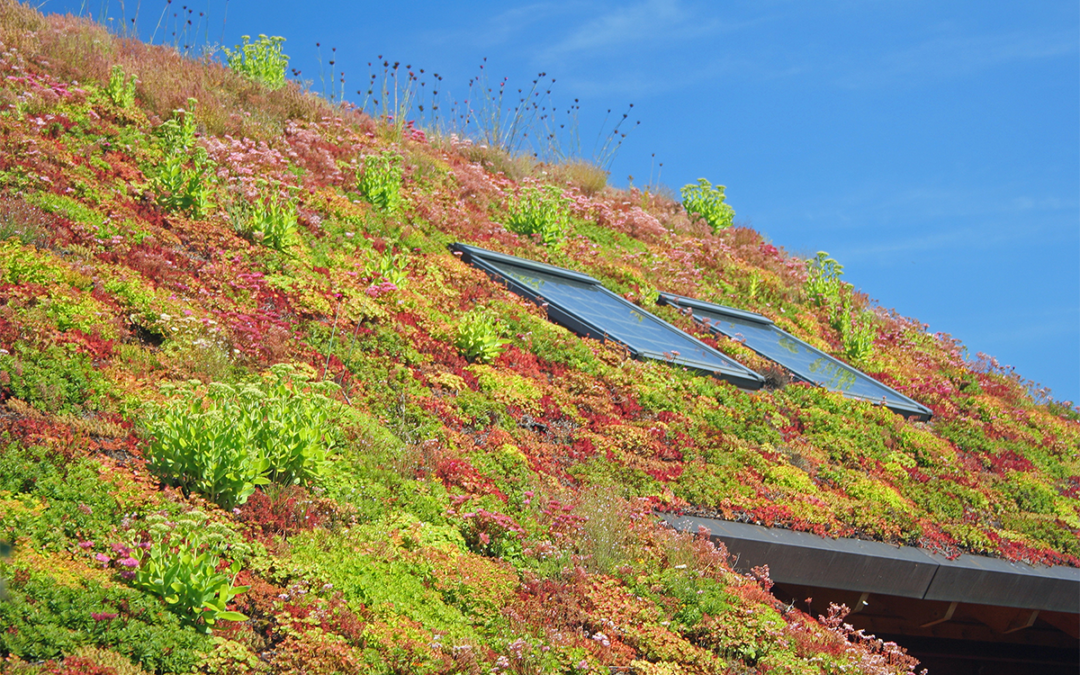
Green Roof Benefits for Sustainable Living
Green roof systems are increasingly popular, whether to re-wild an area traditionally fitted with felt, slate or tiles or introduce a peaceful, natural space to make the most of your rooftop.
Roofs are often underutilised, and although you may need to consider planning permission requirements, most local authorities are keen on green roofs since they support broader sustainability targets.
Pinnacle Works can review all the considerations with you, advise whether your roof layout is suitable for conversion, and recommend the required structural supports. Note that a green roof is not necessarily the same thing as a roof garden, which you would most commonly find on a tall building with a flat rooftop – although you can merge the concept of a roof garden with a green one if you have a reasonable amount of space.
Which Properties Are Suitable?
The first thing to look at is the size and layout of your roof. Green roofs add additional weight to your roof structure, usually around 50 to 200 kg per metre. Many rooftops do not have sufficient support to bear additional weight but can be retrofitted with robust structural reinforcements.
It tends to cost a little more to convert a conventional roof into a green one. Still, there are considerable savings in terms of energy efficiency, pollution reduction and insulation that offset the outlay.
There are also various types of available, so if one style is not possible for your property type, we may be able to suggest an alternative:
- Extensive roofs are lighter in weight and require minimal maintenance. These roofs normally have a low profile layer of grass or flowers on shallow sedum blankets.
- Intensive roofs feature larger plants, bushes and even small trees and are more similar to a roof garden. Most of these roofs are best for larger commercial buildings where the property is substantial enough to bear the load.
- Semi-extensive roofs are a compromise between the two and have a deeper growing layer than an intensive green roof, although they are designed for smaller plants rather than trees or shrubs.
An extensive option is better for a sloped roof rather than an area where you’d like to sit or walk, whereas an intensive one is designed as a flat roof garden. Of course, you could reconfigure your roof space to incorporate a flat area for walking, but many green roofs are an aesthetic feature fitted on a typically sloped roof. An initial survey is advisable since we can assess the shape and pitch of your roof and advise on the appropriate solutions.
Environment Benefits
There are countless reasons an eco-friendly green roof supports your local environment as a microclimate for birds, insects and other species. If you have a property with an accessible roof, you can even repurpose the space to grow vegetables, flowers or herbs.
Biodiversity is a priority in urban spaces, where concrete and brick are inhospitable and mean that beneficial bee populations are falling – a green roof can have an excellent ecological impact.
Green roofs are normally fitted with a waterproof liner made from recycled plastic so that the entire space can be environmentally friendly. However, the advantages aren’t solely related to local wildlife and can benefit everything from property running costs to air quality:
- Rainfall surface water runoff is substantially reduced, particularly relevant for Sustainable Urban Drainage schemes. Rainwater runoff is a real issue in areas exposed to flash flooding, so a green roof can prevent exposure to water damage in heavy downpours.
- A green roof provides sound insulation, with layers of air trapped between the soil and plants. In city areas, you can use a green roof to reduce the noise impact of traffic, airports and street noise, with up to 30% of noise pollution eliminated.
- Green roof schemes regulate temperatures by retaining heat in the winter and allowing for natural airflow in the summer. Buildings with green roofs do not usually require air conditioning and need less heating in colder weather.
Alongside these benefits, a green roof ensures that your property meets higher building rating standards, especially if you select plants or grasses native to the region – this is usually a key factor for planning approval.
With changes to building regulations and a drive towards zero-carbon emissions, a green roof is an excellent way to meet government energy-efficiency criteria and comply with the Future Homes Standard.
Important Factors in Installing a Green Roof
If you are interested in replacing tiles with grass or creating a sustainable, efficient roofing system, it is important to ensure that your green roof is correctly installed.
Underlying roof structures often need strengthening, which requires a structural survey to help establish the necessary reinforcements and the types of planting schemes that will be best suited. Older properties and sloped roofs are not usually designed to bear heavy loads, so your calculations need to factor in waterproofing, protection matting, a drainage layer, filter sheet and root barrier. All these components are essential to protect the structure underneath and ensure your green roof lasts for years to come.
The best option may depend on the size and slope of your roof and the capacity to install a deeper soil level – extensive green roofs require very little maintenance and normally function naturally within the seasonal cycles.
Drainage is also important because soft landscaping can retain a large volume of rainfall, up to 90 per cent, so you need a reliable process to drain the water after heavy rain, usually with an HDPE layer. However, with a professional installation service, a green roof can provide life-long benefits to the local environment, your property value, and energy efficiency as a natural, eco-friendly alternative to other roofing systems.
For more information about green roofs, the installation process, or the right green roof design for your property, please contact Pinnacle Works at your convenience.
